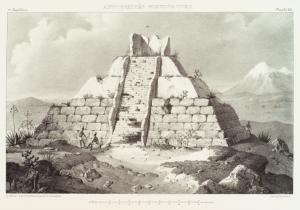
Between 1972 and 1976, Bob Woodward and Carl Bernstein emerged as two of the most famous journalists in America and became forever identified as the reporters who broke the biggest story in American politics. Beginning with the investigation of a "third-rate burglary" of the Democratic National Committee headquarters in the Watergate complex, Woodward and Bernstein uncovered a system of political "dirty tricks" and crimes that eventually led to indictments of forty White House and administration officials, and ultimately to the resignation of President Richard Nixon.
Now available to the public for the first time are Woodward and Bernstein's notes from source interviews, drafts of newspaper stories and books, memos, letters, tape recordings, research materials, and other Watergate papers. Purchased by The University of Texas at Austin in 2003, the Woodward and Bernstein Watergate Papers provide students, scholars, and other researchers a unique resource for behind the scenes insight into the journalism, politics, and humanity of Watergate.
The digitized materials are a very small sample from a collection including “76 boxes, 6 oversize boxes, 3 oversize folders, 3 galley folders, 21 bound volumes (31.92 linear feet).” Some confidential and/or sensitive documents and interviews are not currently available to the public, in physical or digital form, until the death of the source or the release by Woodward and Bernstein. Twenty-nine documents and one audio interview were selected for the online exhibition, divided by topic under the linked headings of “The Washington Post,” “All The President’s Men,” “Deep Throat Revealed,” and “The Final Days.” The featured items are generally what could be considered the most sensational of the collection, and include correspondence from several high-profile figures, original clippings of the breaking news, eccentric fan mail, and personal handwritten notes by Woodward and Bernstein. Additionally, an interview of Woodward and Bernstein by the HRC is included in transcript form, and each question, as well as the entire interview, are MP3 audio links.
A thumbnail of each image is accompanied by a title, date, and short, one-sentence description. If you click on the image, it is enlarged and accompanied by a blurb written by the HRC explaining its context and significance. A specific-as-possible date is given, sometimes with a day and month, other times with just a year. In the case of the audio interview tape, an MP3 and written transcript of the recording are also available. Another link on the site “About the Papers” explains the acquisition of the papers by the HRC in 2003. The page also links to the HRC’s online finding aid for the collection, which includes a biographical sketch, an overview of the scope and contents, a complete list of all correspondents and associated materials, series descriptions, and a folder list, as well as the name of the processing archivist, finding aid ID, and RLIN record ID.
The documents are first shown as thumbnails, in the pixel range of about 80x100. Clicking on the thumbnail reveals a larger image with more metadata, at about 250-400 pixels. Clicking on the image once more enlarges it even further for a detailed view, and a size of about 600-1000 pixels. All of the images are in color, with high resolution. However, the image size is still not as large as the original object, making a viewing of the physical object necessary for any serious scholar. The interview tape digitized both in image (at the relatively small size of 250x150 pixels) and sound. The image is linked to a Quicktime audio file, which opens and plays on a separate webpage.
The intended audience is probably students of government, political science, or American history interested in learning more about this time period- perhaps those who cannot physically come to Austin to view the papers. Other interested parties may include those who lived through this time and want to learn more about the Watergate scandal, or people who are simply interested in knowing more about all of the resources the Harry Ransom Center has to offer.



























